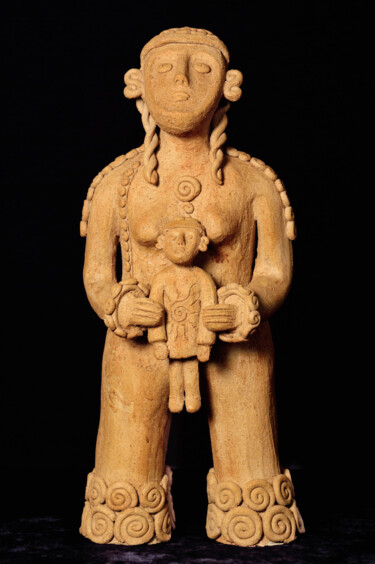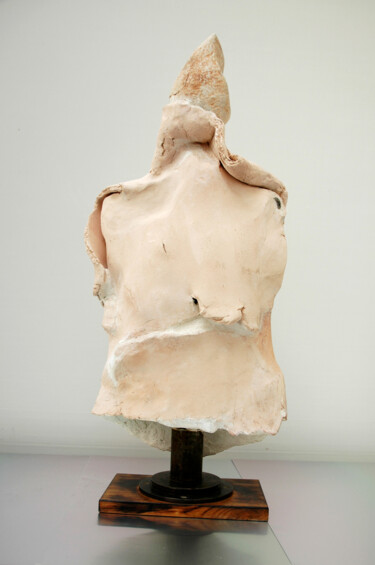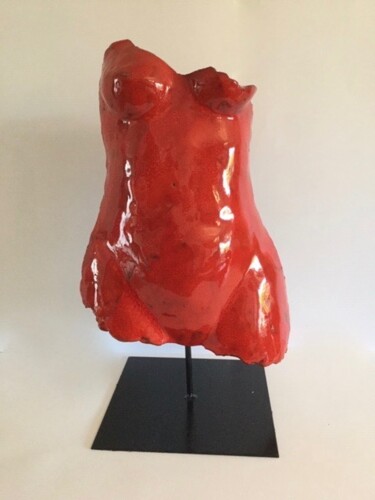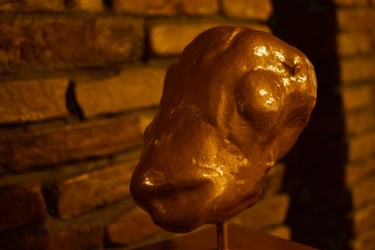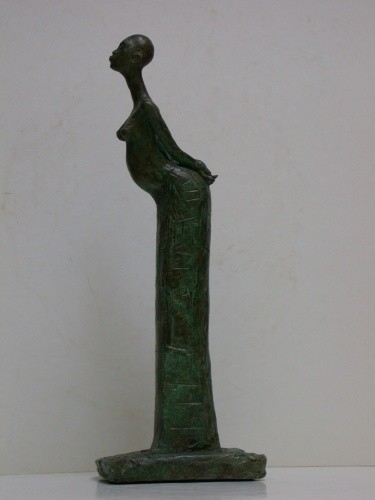9 Oryginalne współczesne rzeźby na sprzedaż:
Jak zdefiniować Sztuka plemienna styl ?
Sztuki wizualne i kultura materialna ludów tubylczych są określane jako sztuka plemienna, czasami nazywana sztuką niezachodnią, sztuką etnograficzną lub, co bardziej kontrowersyjne, sztuką prymitywną. Sztuka plemienna zazwyczaj pełni funkcję rytualną lub duchową. Projektowanie i rzemiosło obiektów z kultur plemiennych, zazwyczaj o wiejskich początkach, określane jest mianem sztuki plemiennej.
W XIX wieku znani zachodni artyści nie uważali nawet sztuki niezachodniej za sztukę. Zamiast tego obiekty te były postrzegane jako relikty i przykłady społeczeństw „egzotycznych” lub „prymitywnych”. Ale w drugiej połowie XX wieku zmieniło się podejście do sztuk plemiennych. Zanim w latach 60. pojawił się postmodernizm, krytycy sztuki postrzegali sztukę plemienną przede wszystkim z formalistycznego punktu widzenia, nie zwracając uwagi na symboliczne znaczenie, kontekst historyczny lub kulturowy ani intencje artysty. Od tego czasu sztuka plemienna, taka jak sztuka afrykańska w zachodnich kolekcjach, jest wysoko ceniona przez międzynarodowych kolekcjonerów, wystawy i rynek sztuki.
Wyrażenie „plemienny” może oznaczać mniej wyrafinowany rodzaj sztuki, który kojarzy się z prymitywizmem i sugeruje brak umiejętności, projektu, intencji lub koncepcji. Jednak w miarę jak muzea ponownie badają i aktualizują swoje zbiory, uznając rzeczywistość, że sztuka plemienna jest daleka od prostoty i prymitywności i często ma umiejętności wykonania, które znacznie wykraczają poza nasze oczekiwania, zyskuje ona coraz większe zainteresowanie opinii publicznej. Dodatkowo ma moc docierania do naszych dusz. Nasze wewnętrzne instynkty mogą się obudzić i połączyć się z ich prawdą w wyniku ich nieodpartej obecności i energii emocjonalnej, wzmacniającej nasze postrzeganie duchowej głębi.
Historycznie rzecz biorąc, zachodni antropolodzy, prywatni kolekcjonerzy oraz muzea etnograficzne i historii naturalnej zbierali dzieła sztuki plemiennej. W zbiorach muzealnych sztukę plemienną można podzielić na trzy główne kategorie: sztukę z obu Ameryk i Oceanii, zwłaszcza z Australii, Melanezji, Nowej Zelandii i Polinezji; i sztuka afrykańska, zwłaszcza z Afryki Subsaharyjskiej.
Afrykańska sztuka plemienna
Rzeźby w kamieniu, rzeźby w drewnie (maski i rzeźby), biżuteria, wyroby plecionkarskie, tekstylia, fajki, instrumenty muzyczne, broń, koraliki oraz projektowanie elementów architektonicznych, takich jak drzwi i ozdoby ścienne, to przykłady afrykańskiej sztuki plemiennej. Na rozwój tych rzemiosł miała wpływ dostępność narzędzi, zasobów i know-how; nie wszystkie plemiona zaangażowały się w te artystyczne przedsięwzięcia. Najbardziej typowym materiałem było drewno, często zdobione gliną, farbą, muszlami, koralikami, kością słoniową, metalem, piórami, sierścią zwierzęcą, rafią, aw rzadkich przypadkach nawet kamieniami półszlachetnymi.
Sztuka afrykańska była fundamentalną częścią wszechogarniającej religii. Siły życiowe rzekomo obecne we wszystkich żywych istotach były reprezentowane przez określone obrazy, które działały jako ich ucieleśnienia lub przedstawiciele. Istota pochodzenia plemiennego została zachowana przez te przedstawienia zmarłych, którzy często przemawiali w ich imieniu i dawali ludziom szansę połączenia się z duchami przodków. Afrykańskie artefakty plemienne były zazwyczaj tworzone jako sztuka religijna - do określonego rytuału lub ceremonialnego użytku - pomimo faktu, że wiele używanych form zawiera elementy świeckie, a niektóre dzieła sztuki są czysto dekoracyjne i ozdobne.
Inicjacja do grup wiekowych, takich jak „społeczeństwa” młodych mężczyzn lub starców, z których każda ma swoje unikalne symbole i motywy kultowe, jest podstawą wielu rytuałów plemiennych. Takie „społeczeństwa” znane są z obfitości rzeźbionych figurek i masek, z których wiele przedstawia bóstwa opiekuńcze, takie jak bóg piorunów czy bóg ognia. Chociaż rzeźby były prawie wyłącznie wytwarzane przez niektóre społeczeństwa jako przedmiot luksusowy, były tak samo wszechobecne i popularne jak maski i miały znaczenie rytualne. Plemię Joruba w Nigerii było wykwalifikowanymi rzeźbiarzami w okrągłych figurach i często wieńczyło swoje zazwyczaj duże maski hordami bardzo żywych lalek, tworząc iluzję, że impreza trwa. Rzeźbiarze mogli osiągnąć pozycję i rozgłos, który był nieco podobny do dobrze znanego artysty na Zachodzie ze względu na doskonały kaliber i reputację rzeźby afrykańskiej wśród innych plemion, zwłaszcza Joruba.
Oceaniczna sztuka plemienna
Subregion Oceanii składa się z czterech odrębnych regionów etnogeograficznych: Polinezji, Mikronezji, Melanezji i Australazji. Oceaniczna sztuka plemienna nawiązuje do tradycji kulturowych i twórczej historii rdzennej ludności zamieszkującej te cztery obszary. Ta kultura Lapita ostatecznie wywarła wpływ na większość Polinezji, Mikronezji i Melanezji. Innym czynnikiem była wietnamska cywilizacja Dong-Son, która kwitła od około 600 rne i była znaczącym handlarzem na zachodnim Pacyfiku. Artefakty z brązu z tej cywilizacji znaleziono w całej Oceanii.
Chociaż każdy region i grupa wysp miała swoje unikalne tradycje estetyczne, które ukształtowały ich sztukę i rzemiosło, oceaniczna sztuka plemienna była powiązana z pogańskimi wydarzeniami obejmującymi zjawiska nadprzyrodzone, kult duchów i płodność. Wytworzono ogromną różnorodność form sztuki, w tym malowanie ciała, tatuaże, malowanie, rzeźbienie, rzeźbienie w drewnie i tekstylia, przy czym większość materiałów używanych przez artystów i rzemieślników była nietrwała. W rezultacie przetrwała tylko niewielka liczba przykładów - z wyłączeniem kamiennych budynków i rzeźb.
Monumentalne kamienne rzeźby (moai) na Rapa Nui/Wyspie Wielkanocnej i na Markizach, stanowiące przykład wykorzystania projektów zawierających antropomorficzne postacie z wystającymi językami i wyłupiastymi oczami, wspólne dla wielu wschodnich i odległych obszarów Polinezji, należą do słynnych przykładów sztuki polinezyjskiej które przetrwały. Inne przykłady obejmują bardzo zdobioną tkaninę z kory w zachodniej Polinezji.
Ponieważ były używane w skomplikowanych obrzędach pogańskich i praktykach kultowych w całej Melanezji, maski były kluczowym motywem w sztuce rdzennej. Mikronezyjskie relikty plemienne obejmują również rzeźbione drewniane miski, malowane łodzie i stylizowane drewniane maski, a także malowanie ciała i tatuaże. Malowanie ciała, malowanie naskalne, malowanie kory, ryciny naskalne, stojące kamienie, rzeźby, rzeźby i ozdobne ozdoby na narzędziach i broni to tylko kilka przykładów licznych stylów i mediów używanych w sztuce australijskich Aborygenów.
Amerykańska sztuka plemienna
Na sztukę Indian amerykańskich głęboki wpływ wywarł zarówno koczowniczy, myśliwski styl życia tych pierwszych, jak i nieco bardziej statyczne, ale mimo to zubożone środowisko tych drugich. Innym istotnym aspektem w powstawaniu odrębnych regionalnie tradycji twórczych była dostępność zasobów, w tym drewna, wikliny, metalu, kości zwierzęcych, gliny i bawełny.
Plemiona południowo-zachodnie były ekspertami w tkaniu, wytwarzaniu ceramiki i tworzeniu fresków. Plemiona te obejmowały ludy Zuni, Navaho i Hopi, a także Hohokam z południowej Arizony, Ansazi z północnej Arizony i Nowego Meksyku, Mimbres z południowo-zachodniego Nowego Meksyku i Ansazi. Rdzenni Amerykanie z południowego zachodu wynaleźli malowanie piaskiem, często nazywane suchym malowaniem (zwłaszcza Navajo).
Na Środkowym Zachodzie plemiona były wyłącznie odpowiedzialne za kształtowanie kultury. Plemiona te były znane ze swojej skomplikowanej sztuki tekstylnej, a także ze swoich dobrze znanych robót ziemnych lub „kopców kukły”, które zostały zbudowane tak, aby przypominały różne zwierzęta. Sztuka plemienna obejmowała również rzeźbione kamienne fajki o wzorach od niezwykle realistycznych po abstrakcyjne, a także rzeźbione drewniane misy oraz ozdoby z polerowanego kamienia i miedzi.
Region południowo-wschodni produkował również fajki w kształcie ptaków i zwierząt, drobno rzeźbione muszle i misternie malowane dodatki odzieżowe. Pomimo używania kiepskiej gliny słynęła z produkcji znakomitej ceramiki. Kawałki ceramiki zostały stworzone i ozdobione różnymi kwiatowymi i geometrycznymi wzorami do użytku ceremonialnego, religijnego i prywatnego.
Wyroby plecionkarskie rdzennych Amerykanów były wybitnym rodzajem sztuki na Zachodnim Wybrzeżu, zwłaszcza w Kalifornii. W szczególności plemię Irokezów z północno-wschodnich Indian było znane ze swoich tkanych pasów wampum, kolców jeżozwierza i masek Towarzystwa Fałszywej Twarzy. Najlepszą sztuką plemienną wytwarzaną na północnym zachodzie była rzeźba, zwłaszcza rzeźbienie w drewnie. Totemy, małe drewniane figurki i maski, które były pieczołowicie malowane i często inkrustowane kamieniami i muszlami uchowców, należały do najpopularniejszych stylów ręcznie rzeźbionej rzeźby.
Jak sztuka plemienna wpłynęła na sztukę współczesną
W połowie XIX wieku, gdy kolejne ekspedycje przywoziły plemienne artefakty, zainteresowanie sztuką znaną wówczas jako prymitywizm/sztuka prymitywna – zazwyczaj sztuką czarnej Afryki – zaczęło rosnąć. Znaczące wystawy sztuki plemiennej z końca XIX i początku XX wieku również wystawiały sztukę niezachodnią zachodniej społeczności artystycznej. W Muzeum Sztuki Nowoczesnej odbywały się ważne wystawy, takie jak American Indian Art z 1941 r. I African Negro Art z 1935 r.
Artyści odkryli model alternatywy dla sztuki zachodniej w posągach plemiennych bogów i rytualnych maskach, których nienaturalistyczne, wysoce stylizowane formy zawierały również potężne, bardzo emocjonalne obrazy. Sztuka plemienna miała znaczący wpływ na słynnych artystów, takich jak Vincent Van Gogh i Henri Matisse, Paul Gauguin i Pablo Picasso. Najbardziej uderzającym wczesnym efektem był kubizm, który poprzez fragmentaryzację obrazu i rezygnację z perspektywy szybko osłabił zachodni paradygmat, czerpiąc przede wszystkim z formalnych implikacji sztuki plemiennej. Sztuka abstrakcyjna była jednym z głównych rezultatów tego.
Niemiecka grupa Die Brücke zaczęła bardziej skupiać się na prymitywnych, instynktownych i rytualnych elementach sztuki niezachodniej mniej więcej w tym samym okresie, ustanawiając główny ruch w sztuce współczesnej znany jako ekspresjonizm. Dadaiści przyczynili się do rozpadu zachodniego paradygmatu, czerpiąc inspirację ze sztuki plemiennej, kubizmu i ekspresjonizmu w Zurychu, Nowym Jorku i wreszcie w Paryżu. Malarskie lub rzeźbiarskie prace Dady składały się głównie z kolażu i asamblażu, jego trójwymiarowego odpowiednika. O tym, że sztukę można tworzyć ze wszystkiego i nie trzeba jej malować, rzeźbić czy modelować, przekonała praca złożona ze znalezionych materiałów. Jego obrazy często zawierały aspekty sztuki plemiennej i były konfrontacyjne na poziomie politycznym, społecznym lub estetycznym. Dada przedstawił koncepcje, które ostatecznie doprowadziły do sztuki konceptualnej, której wpływ mieszał się z wpływami innych nurtów sztuki współczesnej, tworząc ogromną, szeroką, niezwykle bogatą, zróżnicowaną i globalnie zróżnicowaną rzekę sztuki współczesnej, którą obecnie cieszy się świat.
Discover contemporary artworks on Artmajeur
Contemporary art is a vibrant constellation of artistic expressions. This creative universe encompasses a wide array of mediums, from paintings, sculpture, and photography to drawing, printmaking, textile art, and digital art, each medium a star shining with its own distinct radiance. Artists use diverse supports and materials to bring their visions to life, such as canvas, wood, metal, and even innovative digital canvases for the creation of virtual masterpieces.
A contemporary painting, for instance, may weave its story through the masterful strokes of acrylic or oil, while a contemporary sculpture might sing its song in the language of stone, bronze, or found objects. The photographic arts capture and manipulate light to produce striking images, while printmaking employs techniques like lithography and screen-printing to produce multiples of a single, impactful image. Textile art plays with fabrics and fibers, whereas digital art pushes the boundaries of creation with innovative technology.
The allure of contemporary art lies in its boundary-pushing nature, its relentless quest for experimentation and its constant reflection of the evolving human experience. This boundless creativity, coupled with its strong social and personal commentary, makes every piece of contemporary art a unique emblem of its time, a mirror held up to the realities and dreams of our complex world. It whispers to us, moves us, provokes thought, and kindles a deep emotional response, stirring the soul of anyone willing to listen. It is, indeed, the language of emotions and ideas, spoken in the dialect of our era.

©2005 Josef Ciesla
Origins and history of contemporary art
The story of contemporary art unfolds in the mid-20th century, marked by seismic shifts in artistic expression. Post-World War II, around the 1950s and 1960s, artists began experimenting beyond traditional confines, challenging the norms of what art could be. This revolutionary epoch birthed myriad new movements and artistic forms such as abstract expressionism, pop art, and minimalism. Paintings, once confined by realism, embraced abstraction, as artists used color and form to express emotions and ideas. Notable periods like the advent of pop art in the late 1950s and early 1960s saw artworks mimicking popular culture and mass media, reflecting society’s shifting focus.
The sculptural arts, too, witnessed a metamorphosis. Sculptors started to experiment with new materials and forms, often creating artworks that interacted with the viewer and the surrounding space, fostering a sense of engagement. Drawing, a timeless practice, also evolved, with artists incorporating innovative techniques and concepts to redefine its role in contemporary art.
Photography, a relatively new medium, emerged as a powerful tool in the contemporary art landscape. Born in the 19th century, it truly came into its own in the latter half of the 20th century, blurring the lines between fine art and documentation. Printmaking, a practice dating back to ancient times, saw renewed interest and experimentation with techniques like lithography, etching, and screen printing gaining prominence.
The realm of textile art expanded dramatically, as artists began to appreciate the versatility and tactile quality of fabric and fibers. Artists began using textiles to challenge the boundaries between fine art, craft, and design.
The dawn of digital technology in the late 20th century heralded a new age for contemporary art. Digital art emerged as artists started leveraging new technologies to create immersive, interactive experiences, often blurring the line between the virtual and the physical world.
Through these transformative periods, the essence of contemporary art has remained the same: a dynamic, evolving reflection of the times we live in, continually pushing boundaries and embracing the new, always questioning, always exploring.
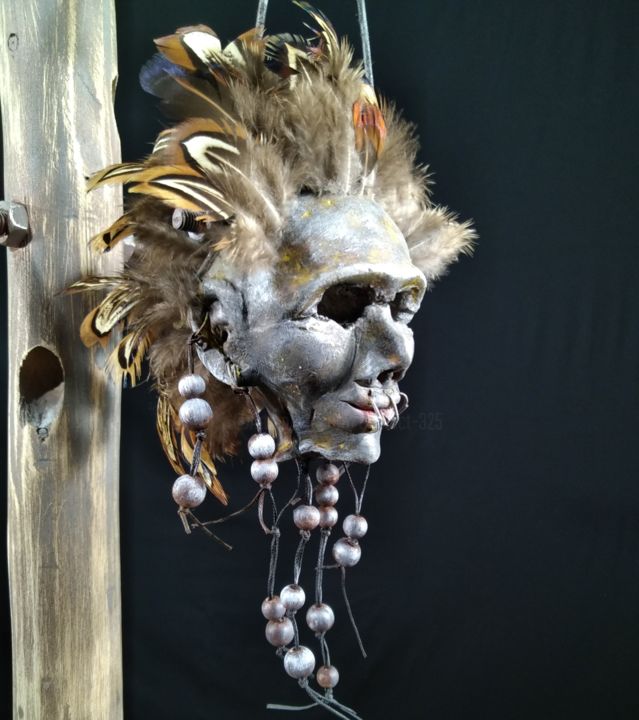
©2019 Igor Gadreaud (Gad the Brand)
Evolutions of theses contemporary works in the art market
As we navigate through the 21st century, the dynamic landscape of contemporary art continues to evolve and expand, reflecting our ever-changing world. Contemporary paintings, once primarily confined to two-dimensional canvases, now embrace a multitude of forms and techniques, ranging from mixed media installations to digital creations, each piece a rich a weaving of thoughts, emotions, and narratives. Sculpture, too, has ventured far beyond traditional stone and bronze, with artists incorporating light, sound, and even motion, embodying the ephemerality and flux of the modern world.
Photography, in the hands of contemporary artists, has expanded its horizons, seamlessly blending with digital technology to create breathtaking imagery that challenges our perception of reality. Drawing, as well, has transcended the borders of paper, incorporating multimedia elements and exploratory techniques to redefine its role in the artistic discourse. Printmaking continues to flourish, with contemporary artists using traditional methods in innovative ways to deliver potent social and personal commentaries.
Textile art, once considered a craft, now holds a prominent place in the contemporary art world, with artists using it to explore issues of identity, tradition, and cultural heritage. Meanwhile, digital art, the newest member of the contemporary art family, has revolutionized the way we create and interact with art, presenting immersive experiences that blur the boundary between the virtual and the physical.
These diverse forms of contemporary art hold significant value in the current art market, not only due to their aesthetic appeal but also their ability to encapsulate and communicate complex ideas and emotions. Collectors, curators, and art lovers worldwide seek these works, drawn to their inherent dynamism, their innovative use of materials, and their eloquent expressions of our shared human experience. As a testimonial to our times, these contemporary artworks encapsulate the pulse of our society and the resonance of individual voices, forever etching our collective narrative into the annals of art history.
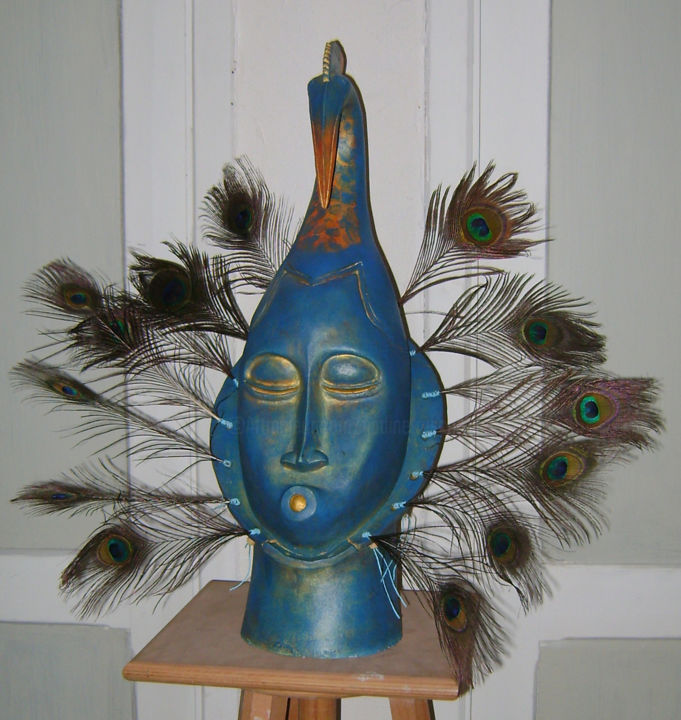
©2020 Nadine Trescartes (fildefériste)
Famous Contemporary Artists
As we delve into the vibrant realm of contemporary art, we encounter an array of artists who shape this dynamic field. Each a master in their medium - painting, sculpture, photography, drawing, printmaking, textile, or digital art - they push artistic boundaries, reflecting our era and challenging perceptions. Let’s explore these remarkable contributors and their groundbreaking works.
1. Gerhard Richter - Known for his multi-faceted approach to painting, Richter challenges the boundaries of the medium, masterfully oscillating between abstract and photorealistic styles. His works, whether featuring squeegee-pulled pigments or blurred photographic images, engage in a fascinating dialogue with perception.
2. Jeff Koons - A significant figure in contemporary sculpture, Koons crafts monumental pieces that explore themes of consumerism, taste, and popular culture. His iconic balloon animals, constructed in mirror-polished stainless steel, captivate with their playful yet profound commentary.
3. Cindy Sherman - An acclaimed photographer, Sherman uses her lens to explore identity and societal roles, particularly of women. Renowned for her conceptual self-portraits, she assumes myriad characters, pushing the boundaries of photography as a medium of artistic expression.
4. David Hockney - Hockney, with his prolific output spanning six decades, is a pivotal figure in contemporary drawing. His bold use of color and playful exploration of perspective convey an intoxicating sense of joy and an unabashed celebration of life.
5. Kiki Smith - An innovative printmaker, Smith’s work explores the human condition, particularly the female body and its social and cultural connotations. Her etchings and lithographs speak to universal experiences of life, death, and transformation.
6. El Anatsui - A master of textile art, Anatsui creates stunning tapestry-like installations from discarded bottle caps and aluminum scraps. These shimmering, flexible sculptures blend traditional African aesthetic with contemporary art sensibilities, speaking to themes of consumption, waste, and the interconnectedness of our world.
7. Rafael Lozano-Hemmer - A leading figure in digital art, Lozano-Hemmer utilizes technology to create interactive installations that blend architecture and performance art. His work, often participatory in nature, explores themes of surveillance, privacy, and the relationship between people and their environments.
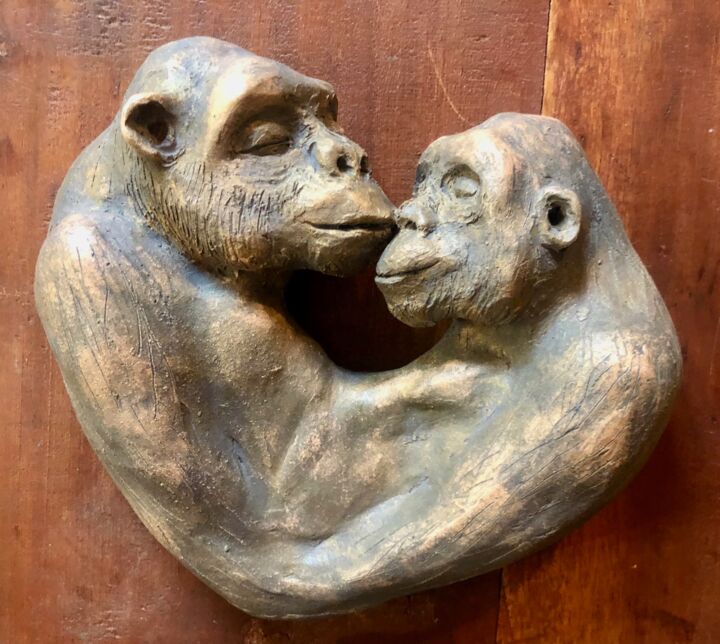
©2022 Seys Sculpture
Notable contemporary artworks
The contemporary art landscape is a dynamic patchwork of diverse expressions and groundbreaking ideas, each artwork a unique dialog with its audience. Here are a selection of some renowned contemporary artworks, spanning various media such as painting, sculpture, photography, drawing, printmaking, textile art, and digital art, that have profoundly influenced this vibrant movement.
"Cloud Gate" by Anish Kapoor, 2006 - This monumental stainless steel sculpture, also known as "The Bean," mirrors and distorts the Chicago skyline and onlookers in its seamless, liquid-like surface, creating an interactive experience that blurs the line between the artwork and the viewer.
"Marilyn Diptych" by Andy Warhol, 1962 - An iconic piece of pop art, this silkscreen painting features fifty images of Marilyn Monroe. Half brightly colored, half in black and white, it reflects the dichotomy of celebrity life and its influence on popular culture.
"Rhein II" by Andreas Gursky, 1999 - This photographic artwork, a digitally-altered image of the Rhine River, is celebrated for its minimalist aesthetic. It strips the landscape to its bare essentials, invoking a sense of tranquility and vastness.
"Black Square" by Kazimir Malevich, 1915 - A revolutionary painting in the realm of abstract art, this piece, featuring nothing more than a black square on a white field, challenges traditional notions of representation, symbolizing a new era in artistic expression.
"Puppy" by Jeff Koons, 1992 - This giant sculpture, a West Highland Terrier blanketed in flowering plants, explores themes of innocence, consumer culture, and the interplay between high art and kitsch. It’s a delightful blend of traditional sculpture and garden craft.
"Re-projection: Hoerengracht" by Ed and Nancy Kienholz, 1983-1988 - A room-sized tableau representing Amsterdam’s red-light district, this work combines elements of sculpture, painting, lighting, and found objects. It engages viewers in a stark commentary on commodification and objectification.
"Untitled" (Your body is a battleground) by Barbara Kruger, 1989 - This photomontage, combining black-and-white photography with impactful text, explores issues of feminism, identity, and power. Its potent, confrontational message is a prime example of the power of text in contemporary visual art.
"For the Love of God" by Damien Hirst, 2007 - This sculpture, a platinum cast of a human skull encrusted with 8,601 diamonds, probes themes of mortality, value, and the human fascination with luxury and decadence. It’s a compelling blend of macabre and magnificence.
"Physical impossibility of Death in the Mind of Someone Living" by Damien Hirst, 1991 - This artwork, featuring a tiger shark preserved in formaldehyde, blurs the line between traditional sculpture and biological specimen. It prompts viewers to contemplate mortality and nature’s ferocity.
"One and Three Chairs" by Joseph Kosuth, 1965 - A piece of conceptual art, it presents a physical chair, a photograph of a chair, and a dictionary definition of a chair, thus exploring the relationship between language, picture, and referent in art.
These pieces, in their diversity, exemplify the rich tapestry of contemporary art, each piece a unique commentary on our world and a testament to the limitless potential of creative expression.

Phélix Ludop
Rzeźba - Terakota | 16,5x7,5 in
